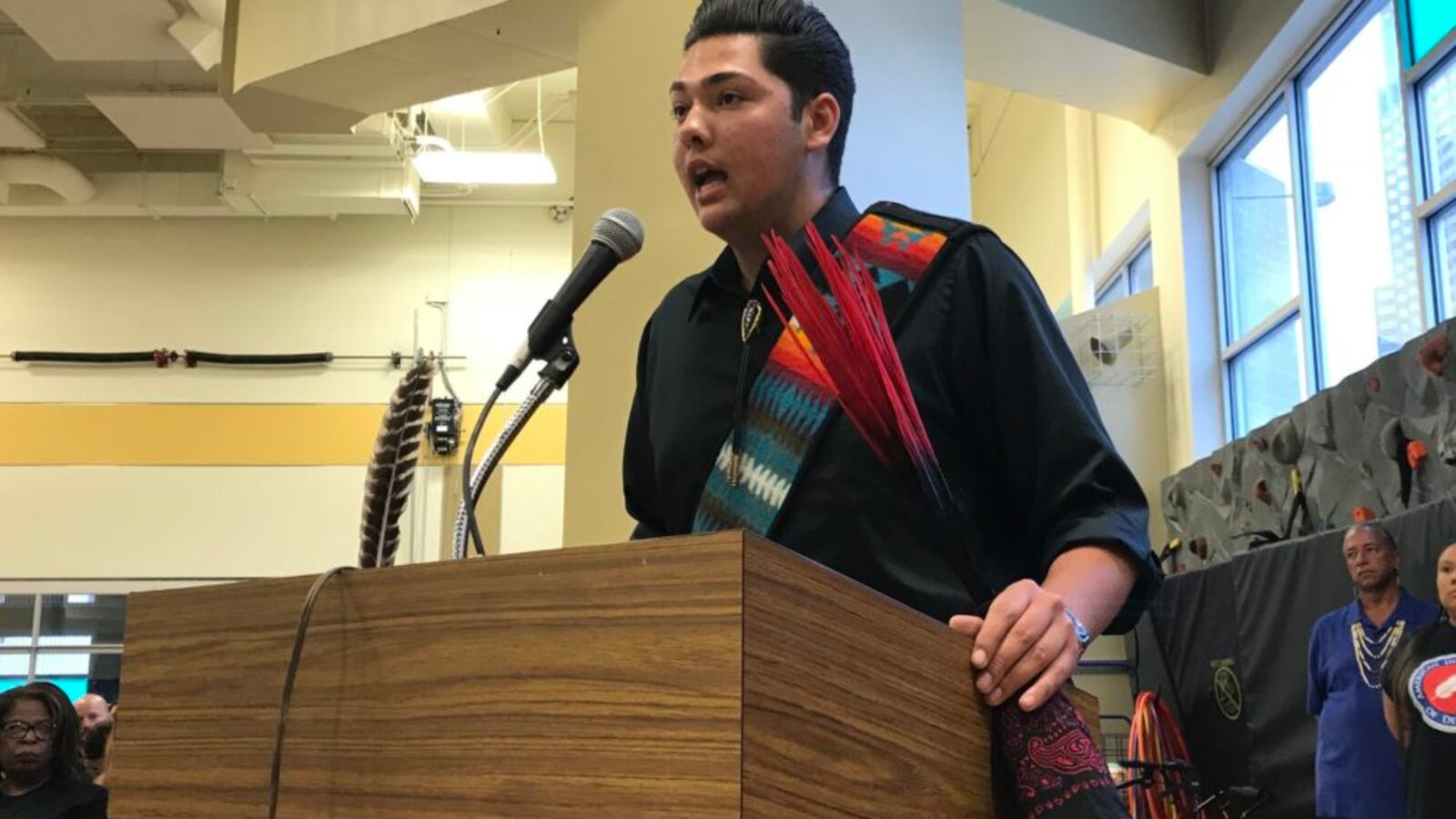A Denver charter school with plans to teach its curriculum through an indigenous lens will delay its opening because it did not attract enough students. The school’s founder hopes to boost recruitment by focusing not on parents but on students.
“We’re scattered all over the city,” said Terri Bissonette, who applied to open the American Indian Academy of Denver. Bissonette is a member of the Gnoozhekaaning Anishinaabe tribe of the Midwest and a Denver educator who specializes in working with Native American students. “We have a lot of kids who may not know another Indian kid outside their family.”
While many parents showed interest in the middle school, Bissonette said, their children didn’t want to leave their friends. “We just didn’t pay enough attention to that,” she said.
The American Indian Academy of Denver had planned to open this fall with sixth, seventh, and eighth grades after gaining district approval last year. Although students of all backgrounds and ethnicities could attend, Denver school board members praised it especially for meeting a crucial need to better serve the city’s Native American students.
Its opening was contingent on attracting at least 96 students for the fall, Bissonette said. Enrollment matters for charter schools because their budgets are based on state per-pupil funding. They must have enough students to afford to hire teachers, buy supplies, and rent space to operate.
But when it came time for families to choose schools for next year, only 31 students listed the American Indian Academy of Denver as their first choice, Bissonette said. The school board on Thursday unanimously voted to allow the school to delay its opening until fall 2020.
Such delays are not uncommon, given that Denver’s student population has plateaued after years of rapid growth. Last year, low enrollment caused another new charter school called The Cube to delay its opening, while two others closed their doors.
About 600 of Denver’s more than 93,000 students identify as Native American or Alaska Native, according to district statistics. By many accounts, Denver Public Schools has not served them well. The four-year graduation rate last year for Native American students was 54 percent, far below the district average of 70 percent, according to state statistics.
The American Indian Academy of Denver plans to focus on science, technology, engineering, art, and math. Lessons on topics such as European explorers coming to North America would be taught from the perspective of those who’d long called this land home.
The school is hosting several youth events this summer to garner interest, Bissonette said. The events include a free lacrosse clinic focused on the origins and cultural significance of the game, as well as an outdoor family weekend with activities such as archery and fire building.
The school is also planning an art event ahead of Indigenous Pop X, a pop culture festival coming to Denver in July that celebrates contributions to comics, film, fashion, and more by Native American artists. Youth who attend the art event can win tickets to the festival.
“I believe that having a second planning year is going to be a blessing in disguise,” Bissonette said. “It’s about community building, and that takes time.”

